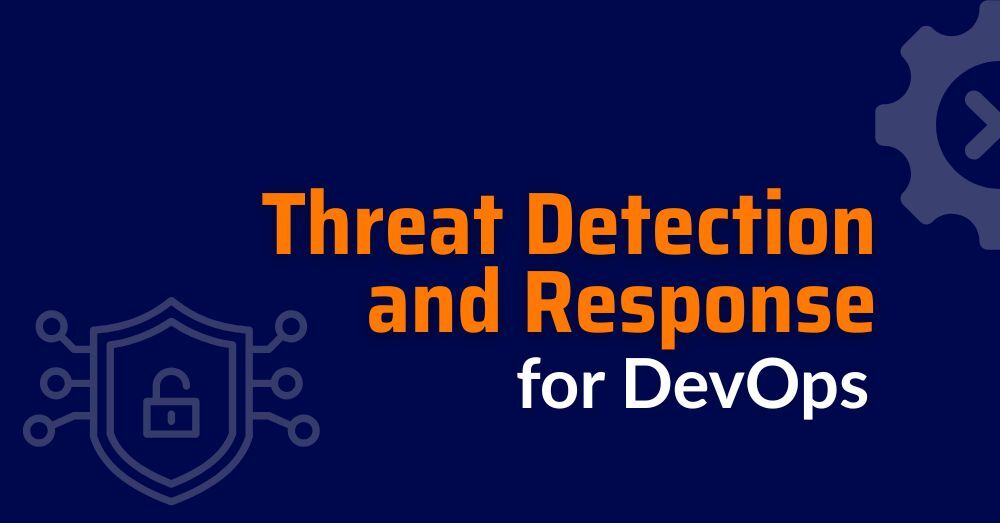1. Introduction: Why Threat Detection and Response Matters
Modern applications face a constant wave of risks, from malicious code in open-source packages to compromised CI/CD pipelines. That is why organizations now invest in threat detection and response solutions designed to catch risks before they spread.
However, most of these rely on generic threat detection and response tools built for infrastructure, endpoints, or networks. They rarely provide the real time threat detection developers need at the code and pipeline level.
This is where modern threat detection and response takes a different role: spotting risks instantly and remediating them inside the developer workflow, without slowing delivery.
2. What Is Threat Detection and Response?
In simple terms, threat detection and response (TDR) is the process of spotting suspicious activity and taking immediate action to contain or remediate it.
- Detection → Identifying anomalies, malicious code, or signs of attack.
- Response → Acting quickly to fix the issue, revoke access, or stop the compromised process.
Traditional tools still focus mainly on endpoints. Newer solutions now cover pipelines and code as well. For developers, the real value comes from real time detection that runs inside pull requests and CI/CD, making security part of daily workflows.
For a widely adopted reference model on how threats are detected and mitigated, see the MITRE ATT&CK, which maps real-world adversary tactics to effective threat detection and response.
3. The Rise of Real-Time Threat Detection
Threats today move fast. Attackers automate everything from dependency poisoning to pipeline tampering. Therefore, real time threat detection is no longer optional, it’s a must for effective threat detection and response.
For example:
- A leaked secret can be harvested and abused within minutes.
- A malicious dependency can execute during your next build.
- A tampered CI workflow can deploy code to production without checks.
As a result, the difference between detecting in real time and responding late defines whether your business stays safe or suffers a breach. Modern threat detection and response solutions now focus on speed and automated remediation, while traditional tools still rely too much on alerts alone.
4. Threat Detection and Response Tools: The Landscape
A wide range of threat detection and response tools exist today. Most focus on infrastructure, endpoints, or networks. However, very few are designed with the developer in mind.
Traditional solutions typically provide visibility into:
- Malware activity in endpoints
- Network intrusions and anomalies
- Suspicious logins or lateral movement
These are essential, but they miss what happens inside the software supply chain, where modern attacks often begin. That’s why organizations now demand real time threat detection paired with automated remediation, bringing protection directly into pipelines and code, instead of only at the perimeter.
5. Why Detection Alone Is Not Enough
Reading about threat detection and response solutions makes one thing clear: most of them focus on alerts, not fixes. Detection without automated response only creates alert fatigue.
- Developers spend hours triaging false positives.
- Security teams get overloaded with unactionable data.
- Real risks slip through because nobody has time to patch quickly.
Therefore, the next generation of security tools must go further, spotting risks and remediating them instantly. Only with real time threat detection paired with automated fixes can pipelines stay secure.
6. Xygeni’s Threat Detection in Action
Instead of relying on dashboards that developers rarely check, Xygeni brings real time threat detection directly into your workflow:
- In Pull Requests → Autofix suggests and applies secure fixes instantly, so vulnerabilities never pile up.
- In CI/CD Pipelines → Anomalies such as tampered workflows or suspicious jobs are flagged before builds ship.
- In Dependencies → Early warnings highlight exploitable packages with context, so you fix what really matters.
As a result, threats are not only detected but also blocked and remediated at the source. That’s what makes Xygeni different from traditional threat detection and response tools, it adds instant remediation without slowing down delivery.
7. Key Benefits for Developers and Security Teams
Above all, Xygeni’s threat detection and response solution is built for speed and accuracy:
- Real-time protection → Catch issues as they happen, not hours later.
- Developer-first remediation → Secure pull requests with fixes, not just alerts.
- Supply chain coverage → Protect code, dependencies, secrets, and pipelines.
- Fewer false positives → Context-aware filters like reachability and exploitability.
- Faster delivery → Security enforces itself without breaking your flow.
Accordingly, Xygeni transforms real time threat detection into a practical advantage for both developers and security teams.
8. Conclusion: From Alerts to Real Fixes
The software supply chain is the new battleground. Relying on detection alone is no longer enough. You need threat detection and response tools that not only flag risks but also fix them in real time.
Xygeni makes that possible by combining real time threat detection with Autofix remediation inside developer workflows.
